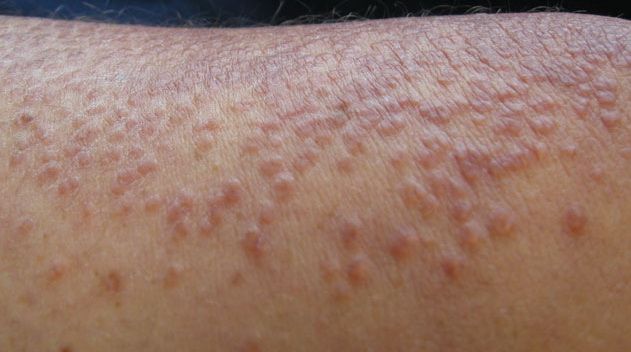SCLEROMYXEDEMA

What is Scleromyxedma?
Scleromyxedma is a rare chronic skin disorder characterized by a rapid growth of the fibroblasts (cells which produce connective tissues) in the skin and mucin (a protein making skin more viscous) deposition in the dermal layer of the skin. The skin symptoms associated with scleromyxedema include papules which are usually red or skin colored and firm in texture as well as sclerosis or hardening of the skin. The skin symptoms can involve extensive areas of the body including the face, knees, and elbows. The disorder usually affects people later in life from ages 30 to 50. The cause of the disorder is unknown. Similar to scleroderma, this skin condition can also have associated systemic involvement. In scleromyxedema, this includes lung disease, cardiovascular abnormalities, polyarthritis, gastrointestinal symptoms, muscle weakness, and eye symptoms.
What is the treatment for Scleromyxedma?
There is no specific treatment for scleromyxedma. Overall, treatment of the condition is difficult as many approaches have been tried and found to be ineffective. Treatments have involved retinoids, corticosteroids, dermabrasion, light therapy, and systemic chemotherapy agents have also been used.


